Welcome to the enchanting world of rustic pergola designs—where the simplicity of nature meets the elegance of outdoor architecture. Whether you’re just beginning your journey into outdoor living or are a seasoned gardener seeking fresh inspiration, integrating a rustic pergola into your natural garden offers a perfect blend of charm and functionality. It provides a cozy retreat to relax under the dappled sunshine, allowing the beauty of your garden to shine through every slat and beam.
In this article, you’ll uncover a wealth of insights into crafting a pergola that harmonizes with your garden’s natural elements. From selecting materials that age gracefully to design tips that highlight your garden’s unique features, you’ll find practical guidance tailored for every skill level. Let’s embark on this journey together and transform your outdoor space into a serene haven of rustic beauty.
Choosing Rustic Pergola Materials
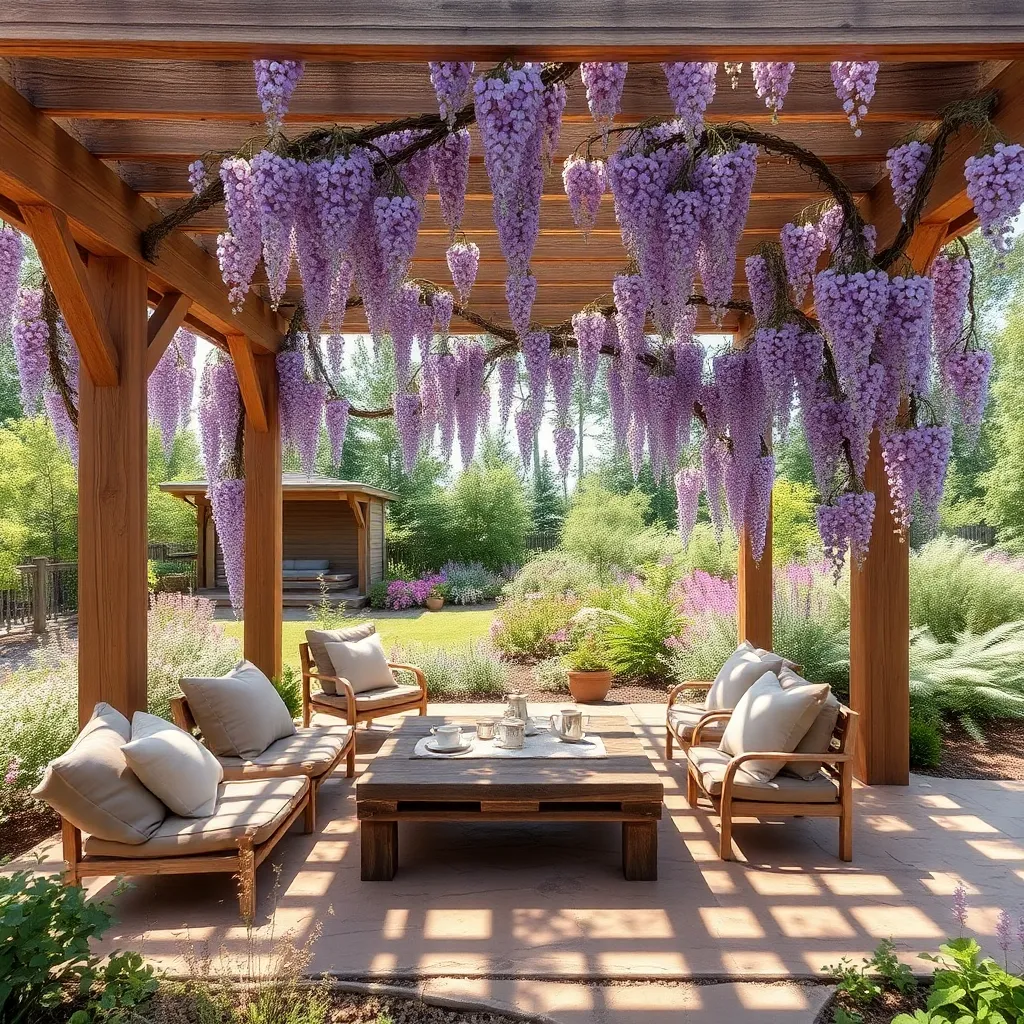
When choosing materials for a rustic pergola, consider using natural options like reclaimed wood, which offers both durability and an authentic weathered appearance. For beginners, cedar and redwood are excellent choices due to their natural resistance to decay and insects. These woods also provide a warm, inviting color that complements a natural garden setting. If you’re more experienced, try incorporating stone or brick columns for added stability and a touch of elegance, ensuring the base is firmly set in concrete for longevity.
Design elements such as rough-hewn beams and natural finishes play a significant role in achieving that perfect rustic look. A practical tip is to use natural oil finishes like linseed or tung oil to protect the wood while enhancing its natural grain and texture. This not only preserves the wood but also deepens its rustic charm over time. For those seeking a more advanced project, consider adding integrated planters or vining plants like wisteria or grapevines to grow over the pergola, creating a lush, shaded area that becomes a seamless part of the garden landscape.
Incorporating Natural Elements Seamlessly
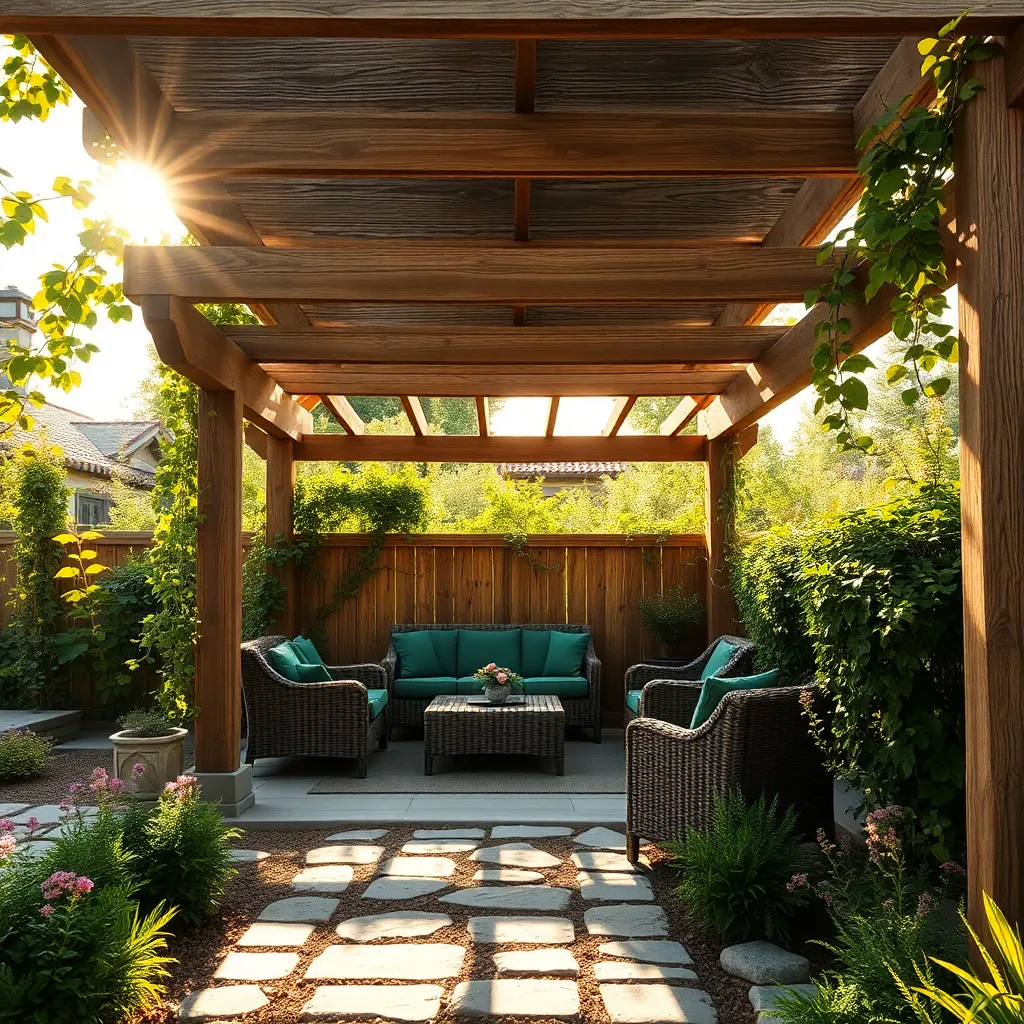
To seamlessly incorporate natural elements into your rustic pergola, consider using local stone or reclaimed wood for the structure’s base or columns. These materials not only enhance the rustic charm but also blend effortlessly with the surrounding environment. Choose climbing plants like wisteria or grapevines to drape over the pergola, offering both shade and a lush, organic canopy that evolves with the seasons. Beginners can start with fast-growing species for quicker results, while more experienced gardeners might explore native plant varieties for a robust, low-maintenance setup.
Another effective method for integrating natural elements is through the use of natural finishes and textures. Opt for untreated wood to achieve an authentic weathered look, or apply eco-friendly stains that mimic natural hues. Consider incorporating natural stone pavers or gravel around the pergola to extend the rustic feel to the surrounding space. For advanced gardeners, adding a water feature nearby can enhance the tranquility of the area, creating a harmonious retreat that feels like an extension of the natural landscape.
Designs That Complement Garden Landscapes
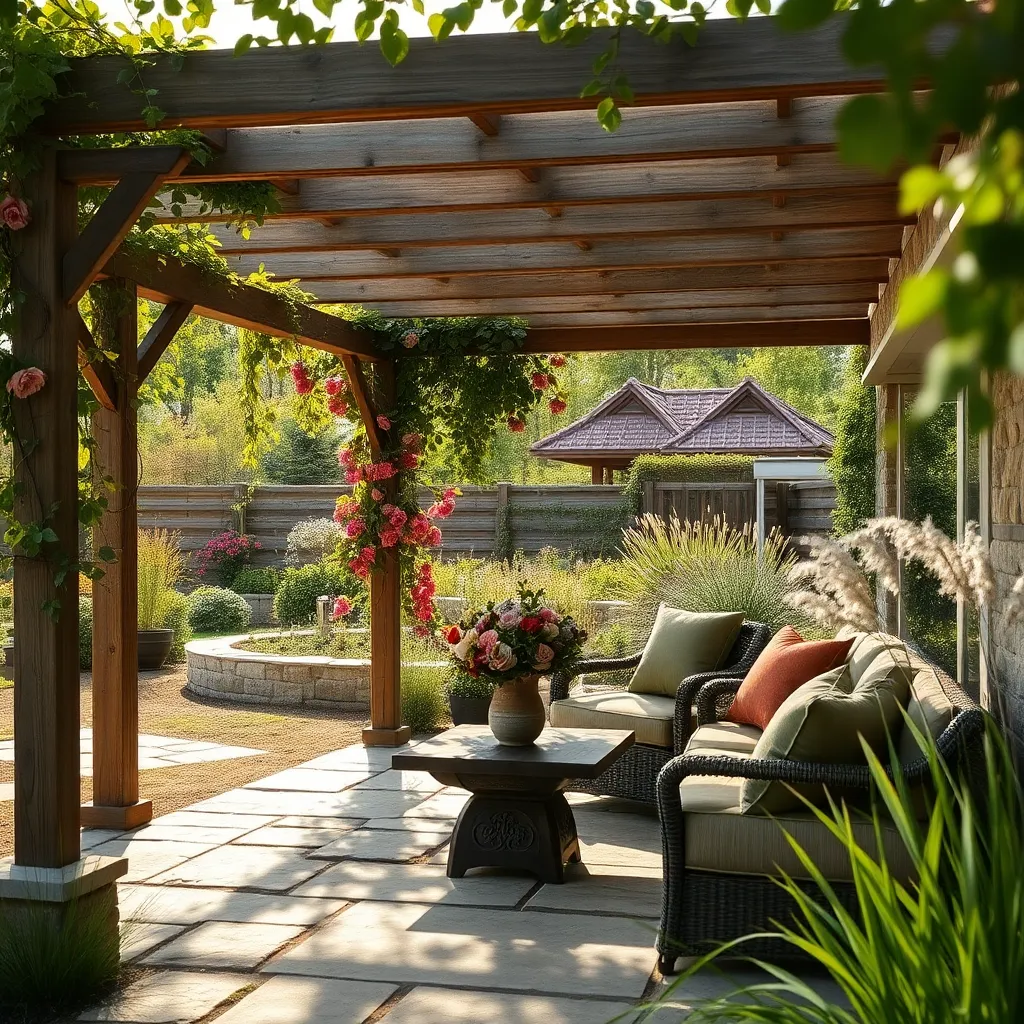
To create a rustic pergola that complements your garden landscape, consider using natural materials like reclaimed wood or bamboo, which blend seamlessly with outdoor environments. The dimensions of your pergola should match the scale of your garden; for a balanced look, aim for a height of at least 8 feet and ensure the width and length accommodate both your garden space and desired coverage. Beginners can start with a simple post and beam design, while more advanced gardeners might incorporate lattice elements for added texture and climbing plants.
Design elements such as open rafters help maintain a natural light flow, enhancing the garden’s ambiance. To add a personal touch, use natural stains or sealants that not only protect the wood but also highlight its grain, contributing to the rustic appeal. Consider adding features like integrated seating or planters to make the pergola more functional. For those with a knack for DIY projects, incorporating trellises or hanging baskets can elevate the design and provide additional space for showcasing floral displays.
Enhancing Pergola With Climbing Plants
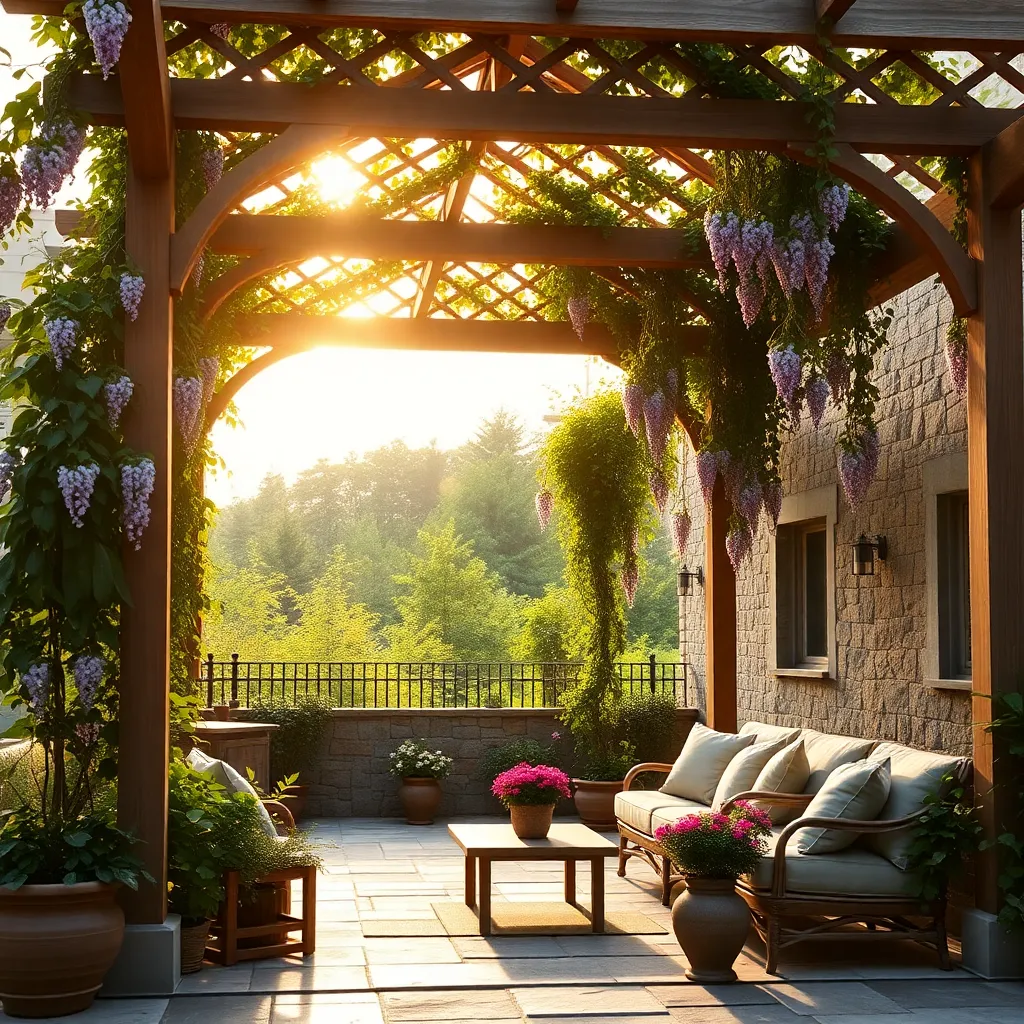
To transform your pergola into a lush, living shelter, consider integrating climbing plants that thrive in your climate. Choose varieties like wisteria, clematis, or honeysuckle, known for their vigorous growth and appealing blooms. Ensure the pergola is constructed with sturdy materials, such as cedar or treated hardwood, to support the weight of mature vines. Beginners might start with annual climbers like morning glories for quick results, while seasoned gardeners could experiment with perennial varieties, which offer long-term coverage.
Enhancing your pergola with climbing plants not only adds beauty but also provides natural shade, enhancing the usability of your outdoor space. Use trellises or wire supports to guide the plants along the structure, encouraging even coverage and preventing overgrowth. To maintain a neat appearance, regular pruning is crucial, especially for fast-growing species. Advanced gardeners can create a layered effect by mixing different climbers, ensuring a succession of blooms and colors throughout the seasons. Additionally, consider the direction of sunlight and the plant’s growth habits to optimize placement and care.
Maintaining Rustic Appeal Over Time
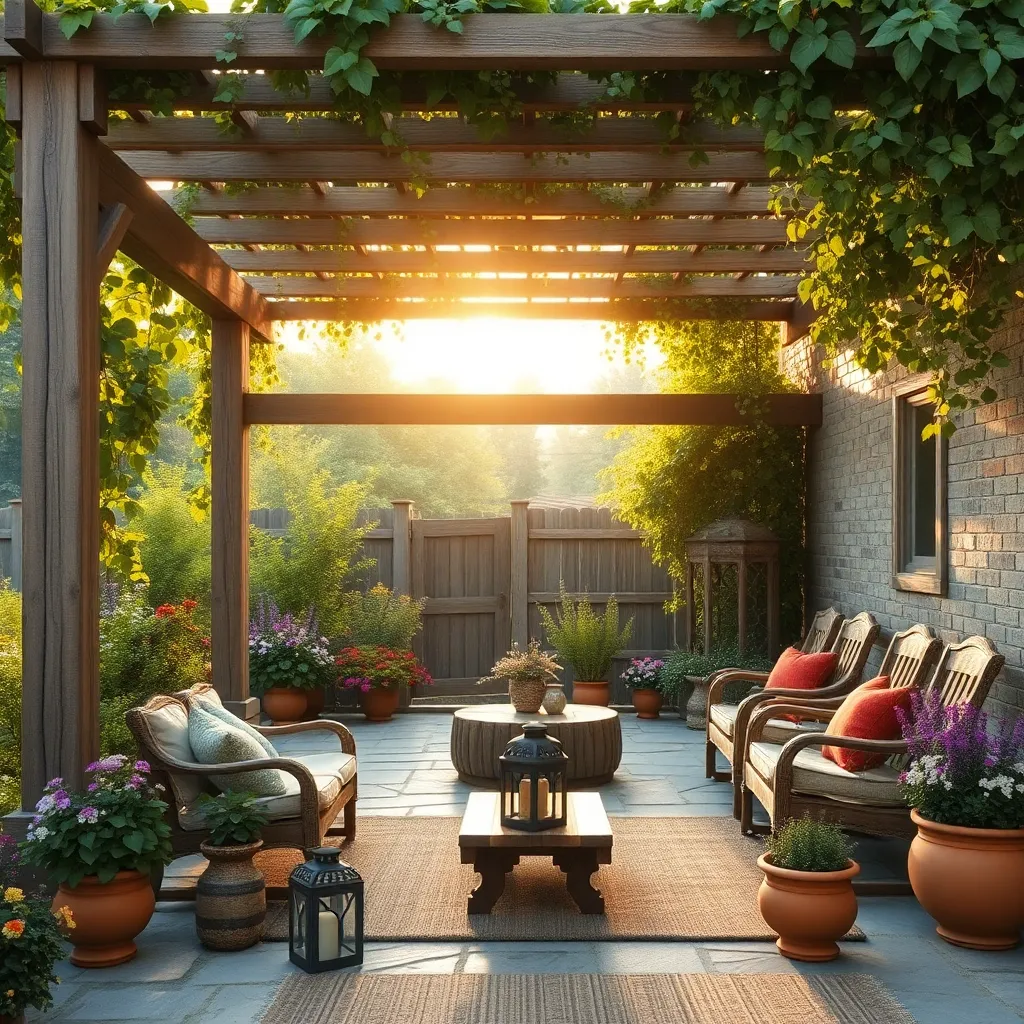
To maintain the rustic appeal of a pergola over time, choosing the right materials is key. Opt for durable woods like cedar or redwood, which naturally resist decay and insects. Regularly apply a protective sealant to preserve their warm, natural tones and prevent weathering. For those with a more adventurous spirit, consider using reclaimed wood for a truly unique and eco-friendly touch.
Incorporating natural elements like stone or gravel paths can enhance the rustic charm. These materials require minimal maintenance and blend seamlessly with the landscape. Ensure that the pergola’s design complements your garden by using simple, clean lines and avoiding overly intricate patterns. For a more advanced touch, integrate wrought iron or weathered metal accents to create a harmonious blend of textures and styles within your garden sanctuary.
Conclusion: Creating Beautiful Outdoor Spaces
In exploring the enchanting world of rustic pergola designs for natural gardens, we uncovered five key relationship concepts that seamlessly translate to nurturing our personal connections. First, the importance of a strong foundation mirrors the need for trust and stability in our relationships. Second, the intricate design highlights the beauty of diversity and individuality in partnerships. Third, the open spaces of a pergola remind us of the value of communication and transparency. Fourth, the blending of nature and structure reflects the balance between freedom and commitment. Lastly, the adaptability of pergola designs encourages flexibility and growth in our relationships.
To bring these concepts to life, consider taking a walk with your partner in a garden or park, discussing how these principles can enhance your relationship. As you take this step, remember to save or bookmark this article for ongoing inspiration and practical guidance.
By embracing these timeless lessons from nature, you are setting the stage for a flourishing relationship. Keep these insights close as you build a love that is as enduring and beautiful as a rustic pergola in a natural garden. Your journey toward relationship success begins now—cherish it, nurture it, and watch it grow.
